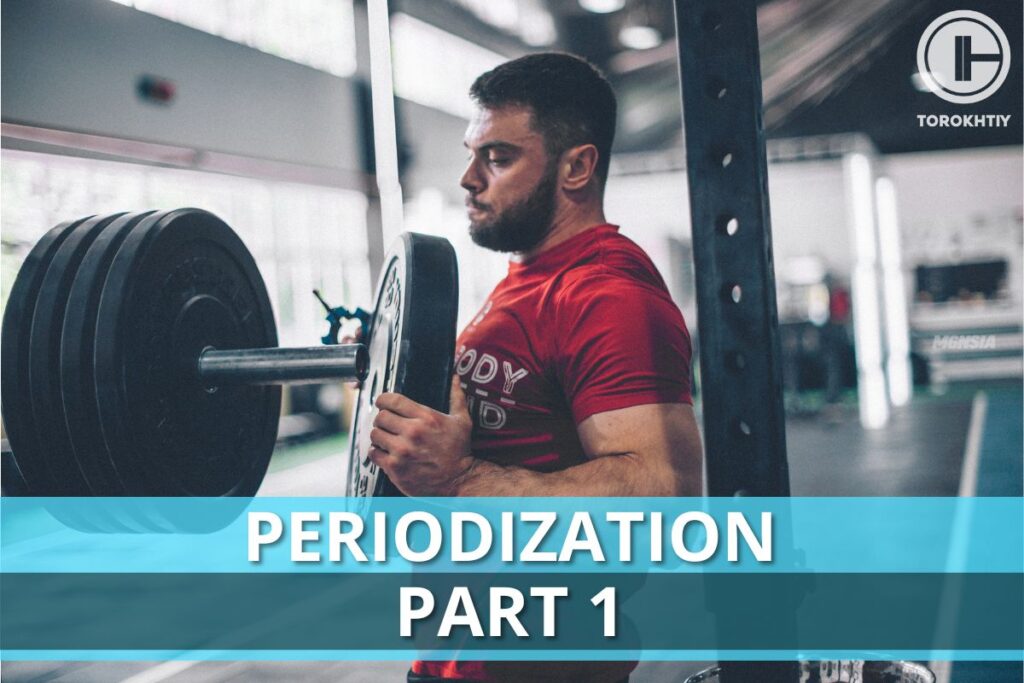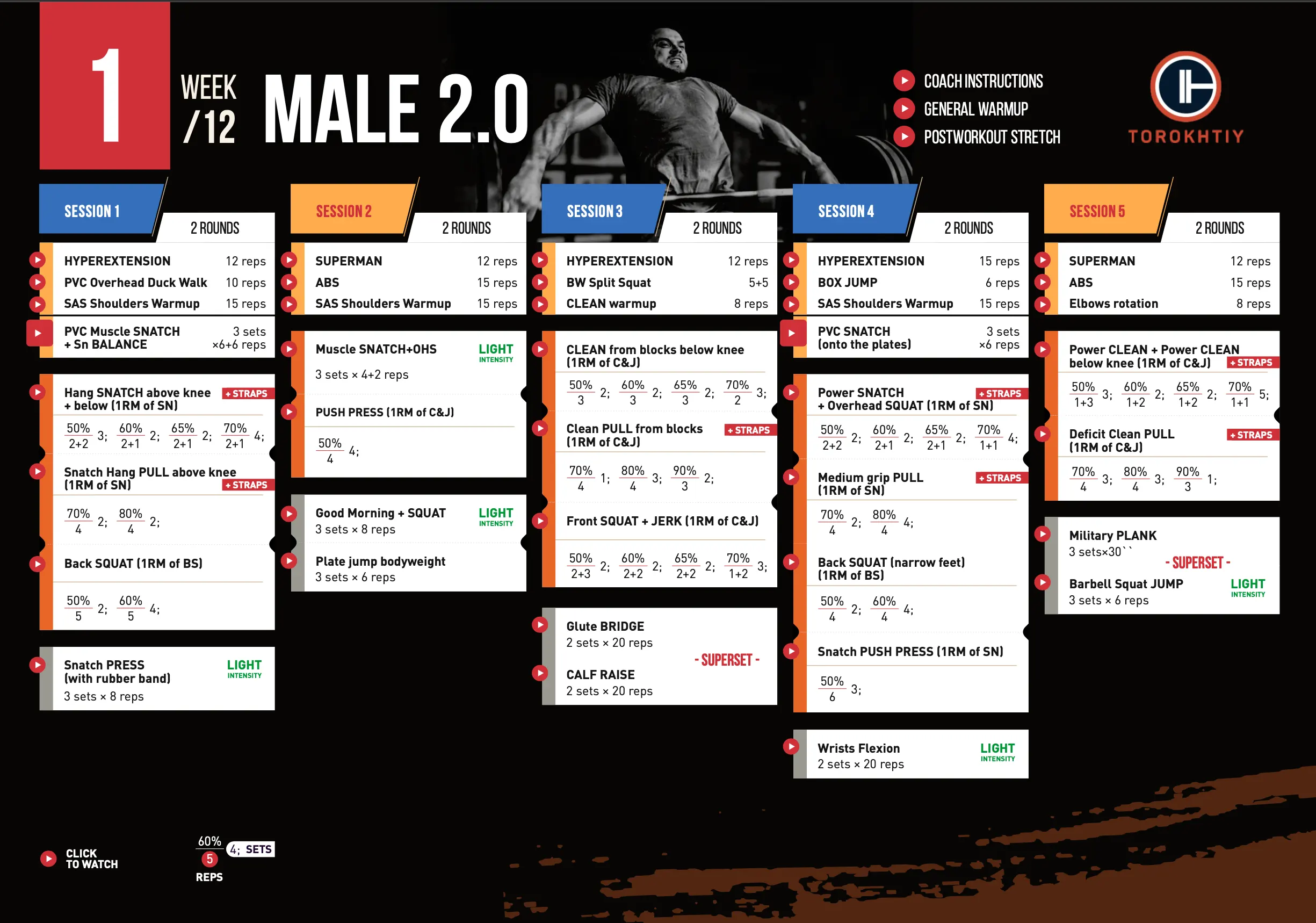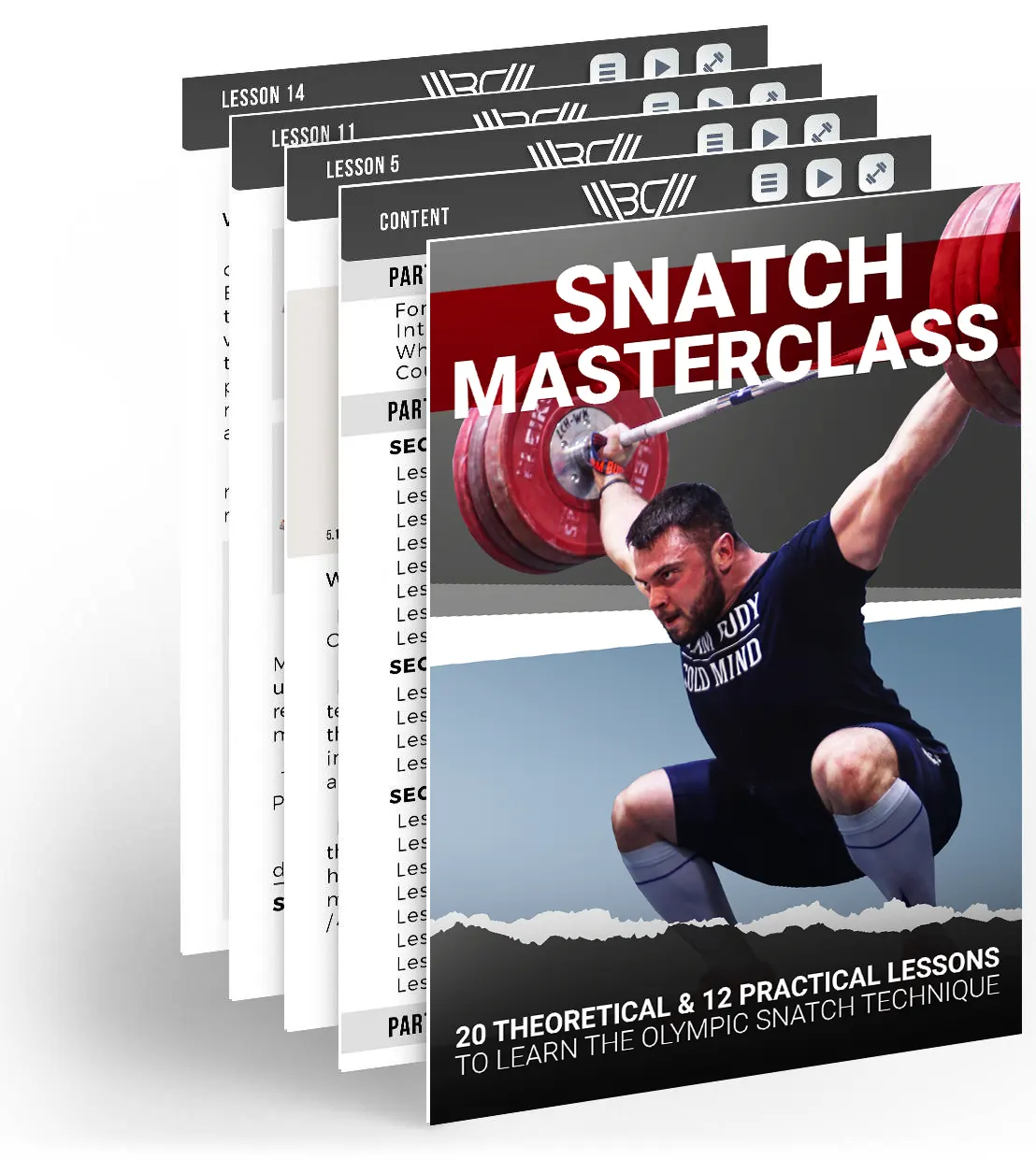Periodization, Part 1
Author:
Unlock your full potential by engaging with our experts and community! Have questions about your fitness journey or looking for expert advice on weightlifting techniques? Don’t hesitate — leave a comment below and Sergii Putsov will provide a personalized answer and insights to help you reach your goals.
Torokhtiy is reader-supported. Some links are affiliate links, and we may earn a commission at no extra cost to you. See our disclosure page for details.
Preparation periodization is a creative process that allows you to control the process of reaching your peak athletic shape, taking into account the calendar of competitions.

The rational periodization basis lies in the construction of a training process that provides adaptation from varying the сharge and methods of training.
Besides, the coach and the athlete must solve the following tasks:
- Competently plan the charges to promote the physical training;
- Maintain a balance in case of different levels of preparedness;
- Apply the techniques required for this period and phase, weeks or class.
Preparatory Period
The preparatory period in weightlifting lasts 6-8 and sometimes even up to 10 weeks. It is exactly when the functional base, necessary for thigh performance, is created, motor skills are improved, physical qualities are developed and tactical and psychological training is carried out.
You may like it:
- Detailed Olympic Weightlifting Program For Beginners
- 12-Week Weightlifting Program For Women (Detailed Example)
- Create Your Olympic Weightlifting Program (Examples Included)
The exercises applied can significantly differ from the competitive ones in character and structure, since the main task of preparation at this stage is not sports performance, but the enhancement of functional systems capabilities. This involves the wide use of various auxiliary exercises.
During the preparatory period, the ratio of training aids changes. At the beginning of the period the main exercises are of a basic and auxiliary nature. Gradually, the ratio changes in the direction of special-preparatory and competitive exercises growth.
The preparatory period is divided into two stages: general preparatory and special preparatory. The duration of the stages ratio depends on the athlete´s level. When preparing highly qualified athletes, a relatively short general preparatory stage (2-3 weeks) and a long special preparatory (4-6 weeks) are planned; less experienced athletes (up to 3 years) will need the opposite ratio.
General Preparatory Stage
Main goals:
- To increase the athlete’s general and auxiliary personal fitness level;
- To increase the functional systems capacity;
- Diversified technical training.
First of all, this stage is responsible for creating the foundation necessary for further work on the results. Special attention is paid to the speed-strength qualities development and improvement of separate movements technique elements.
The snatch and clean exercises are performed from non-standard initial positions (blocks, deficit and different hang positions) with the use of various elements of training – pre-fatigue, static, deceleration, combined modes of operation.
Also in the training programs of this stage, a large number of special jumping activities are planned before and after classes. Coaches often plan individual training sessions at the stadium for short sprints and accelerations execution.
Follow us!

Free!
Get a 2-week Weightlifting Program as a bonus for the subscription to kickstart your training plan!

Free!
The important general preparatory stage task is to increase the athlete’s ability to deal with heavy loads. Therefore, various types of work are used and combined to develop explosive strength and power endurance. The number of repetitions in one set can reach 4-6.
A good example for this stage can be such a snatch exercise as snatch pull + power snatch + OHS (2 + 2 + 2) or a clean exercise like front squat + push press + jerk (2 + 2 + 2). At the same time, the intensity will not be high (55-65%), but if there are 3-5 sets, it will be hard to call such training easy.
A large number of power presses, push-ups, abdominal and core exercises are appropriate at this stage. According to the trainers’ recommendations and experience in female programs, the workload in auxiliary press exercises in this period grows up to 10-15% due to the fact that women have a disproportion in the manifestation of the strength in their upper and lower extremities.
On this point, athletes often have to train in an incomplete recovery state, which is quite acceptable for this stage of preparation. The development of flexibility and coordination abilities is also of great importance. Full stretching and myofascial release should be an integral part of an athlete’s training at any level, as this is one of the ways to prevent injuries and preserve athletic longevity.
The competitive exercises part doesn’t comprise much of the total volume. The training effectiveness in this preparatory period does not directly depend on the competitive exercises volume.
Moreover, their excessive use to the detriment of auxiliary and special preparatory exercises can adversely affect the training quality. Therefore, SNATCH should be performed not more than once a week, C&J can be scheduled every 7-10 days – not less than this.
Our next articles will be about the special preparatory stage of the preparatory period and the peculiarities of the competition period, and will also comment on how to plan the load in the transition period properly.
Why Trust Us?
With over 20 years in Olympic weightlifting, strength training, nutrition coaching, and general fitness our team does its best to provide the audience with ultimate support and meet the needs and requirements of advanced athletes and professional lifters, as well as people who strive to open new opportunities and develop their physical capabilities with us.
By trusting the recommendations of our certified experts in coaching, nutrition, and sports training programming, as well as scientific consultants, and physiotherapists, we provide you with thorough, well-considered, and scientifically proven content. All the information given in the articles concerning workout programming, separate exercises, and athletic performance, in general, is based on verified data.
The product testing process is described in more detail here.
Author: Sergii Putsov
Head of Sport Science, PhD
Best Results: Snatch – 165 kg,
C&J – 200 kg
Sergii Putsov, Ph.D., is a former professional weightlifter and National team member, achieving multiple medals in the 94 kg weight category at national competitions. With a Master’s degree in “Olympic & Professional Sport Training” and a Sport Science Ph.D. from the International Olympic Academy, Greece, Sergii now leads as the Head of Sport Science. He specializes in designing training programs, writing insightful blog articles, providing live commentary at international weightlifting events, and conducting educational seminars worldwide alongside Olympic weightlifting expert Oleksiy Torokhtiy.





Still have questions after reading our article? Unlock your full potential by engaging with our experts and community! Don’t hesitate — leave a comment below and Sergii Putsov will provide a personalized answer and insights to help you reach your goals.